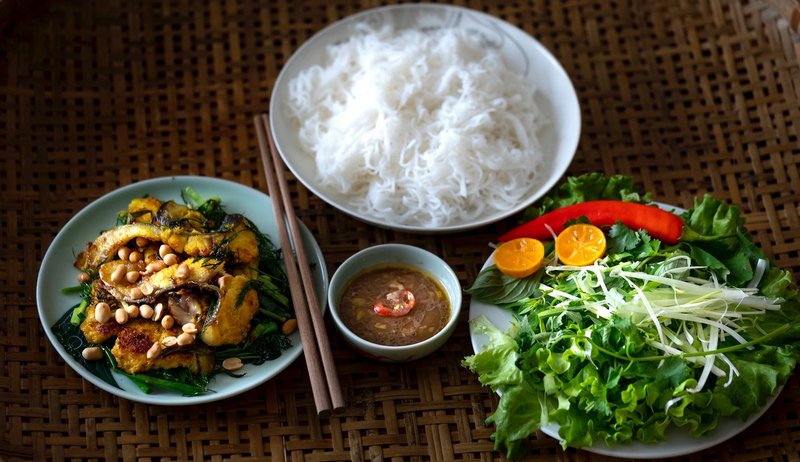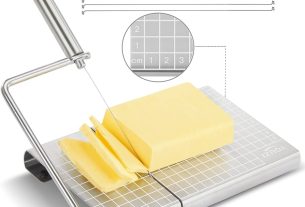Do you like a quick hearty meal? I do, and I think almost every busybody would want to be able to fix a quick meal that is delicious and heavy on the tummy to start the day. To do just that, you will need rice noodles handy or better pile a few in your cupboard.
What is rice noodles? Noodles are a type of food that looks like pasta but are mostly slimmer than pasta and appear like strings. Noodles can be made from different kinds of flour, but rice noodles are made especially from rice flour. It can also be kept and remain fresh for months.
Can I store rice noodles in my freezer? Definitely, you can store rice noodles in the freezer and have it frozen for a few months. It is in fact better to freeze uncooked noodles to lengthen its shelf-life. You need to be sure to package it properly before freezing it because it may change taste or texture after it has been thawed after freezing. Keep in mind that cooked rice noodles have shorter shelf-life when frozen unlike uncooked noodles.
In this article, we will give you some tips on freezing cooked and uncooked rice noodles.
How To Freeze Cooked Rice Noodles
When preparing rice noodle dishes, you can choose not to combine big portions of noodles with the sauce if you are not sure that you can eat it all. You can apportion the noodles and the sauce to several servings and mix it all only when it is to be eaten.
Rice noodles with sauce or with other ingredients make the noodles spoil quicker. When frozen, the sauce can also make it a bit watery and soggy after thawing. So, it is not recommended to mix all your noodles and sauce when you cannot really consume the entire dish or when you expect to have leftovers.
It is also a good practice to cook noodles a bit firmer or al dente so it will still have a good texture and consistency even after reheating.
Before placing the sauced rice noodles in your freezer, be sure to pack it in a dry food container with lid or in a resealable freezer bag. Layer the noodles in the container or freezer bag carefully such that the noodles are flattened inside it. If you used freezer bags, be sure it lay it flat inside your freezer so it will not look like a lump. If you apportioned the cooked noodles in several freezer bags, it is good to stack them carefully atop each other.
If you chose to use a food container, do not fill it up completely with noodles but leave some space between the noodles and the lid. It can expand while stored in your freezer because of the ice crystal formation. So, it is better to leave some space in your container. Also, place the food container at level position inside your freezer so the noodles will not lump together in one side of the container.
Next, put the sauce in a different container with lid or in a tightly sealable freezer bag. You can stack it beside the noodles inside your freezer.
Keep in mind that once the noodles are frozen, it will have a different texture after thawing it, but it does not mean it is already spoiled. You can also put labels on each container or bags so you will be reminded of its shelf-life.
Freezing Uncooked Rice Noodles
Uncooked rice noodles are easier to freeze than cooked noodles because it is firm and whole. It also has longer shelf-life than cooked ones when frozen. Just place the noodles in a food container with lid or inside a freezer bag. It is also best to package it in vacuum sealed bags. Always label the bags or food containers with the dates to remind you of its shelf-life.
If you want to freeze uncooked rice noodles is small packages or portions, put it in the freezer bag so you can stack it flat inside your freezer on top of each other. It will save you some space inside your freezer and you can easily get a bag or two when you need it.
Thawing and Reheating Frozen Rice Noodles
Like any other food, it is important to know how to properly thaw and reheat rice noodles so it will not grow bacteria on it which can cause health problems. Knowing the best way to do it will also prevent the noodles from becoming too soggy after thawing.
One easy technique but surely not the quickest is by putting the frozen noodles inside the fridge right out of your freezer. Leave it inside the fridge for 8 hours or more to thaw. You can also leave it overnight to thaw.
After thawing, it is good for reheating. Keep in mind that you can only freeze rice noodles once. You must consume it after reheating and do not put it back in the fridge or freezer because it has become susceptible to food-born bacteria after reheating once.
Ways to reheat rice noodles
It is easy to reheat rice noodles after it has been thawed. You can choose which is the best way for you. Here is the 3 ways reheat rice noodles.
1. Microwave
Microwaving rice noodles is the simplest and quickest way. Put the thawed noodles in a microwave friendly dish or container. You may sprinkle some water on the noodles, or you can put one cup of water in the microwave in a separate container to add moisture while reheating. Reheat for about 25 to 30 seconds and you may increment it to 5 seconds when needed.
2. Skillet
Reheating rice noodles on a skillet is also a good option. Prepare your skillet and carefully place the rice noodles. Heat it at medium temperature for not more than 15 minutes. Sprinkle some water to add moisture.
Using a skillet is also the best way to reheat cooked noodles. Add a teaspoon of oil to prevent it from drying and stir it carefully while reheating to ensure it is reheated well.
3. Oven
The best way to reheat rice noodles with sauce is to use the oven. Place the cooked rice noodles with sauce evenly on the oven tray or in any oven safe container. Set oven at around 350 degrees F. and warm it for not more than 20 minutes.
The Shelf Life Of Rice Noodles
As we stated earlier in this article, cooked rice noodles have shorter shelf life than uncooked noodles when stored in the refrigerator. Even when packed in an airtight food container or freezer bag, it can only be good for about five days when stored in your fridge.
Uncooked or cooked noodles package properly and stored in the freezer can be best for not more than two months, but keep in mind that the texture or taste may slightly change compare to fresh unfrozen rice noodles.
Remember that when storing rice noodles in your freezer, the temperature should remain constant to prevent food-born bacteria from growing on it. After thawing or when taken out of the fridge, do not leave it sitting at room temperature above 40 degrees F because it may hasten bacterial growth on the noodles. Also, reheated rice noodles should not be put back in the freezer or fridge because it is prone to bacterial growth after reheating. It should be consumed right away, and the leftovers should be discarded.

Related Questions
Can you get poisoning from rice noodles?
Dry and uncooked rice noodles does is not susceptible to food-born bacteria so it is less likely that you will get poisoned by it. However, once it is cooked and left sitting at room temperature ranging from 40 to 140 degrees F, bacteria could have grown fast which can cause mild to severe poisoning or other health issues when ingested.
Remember proper handling of food and proper storage can protect food from food-born bacteria and once reheated, it should be consumed right away. Leftovers of reheated rice noodles better discarded to be safe.
How can you tell if rice noodles have gone bad?
It is easy to tell if the rice noodles turned bad or is already spoiled. You may notice a different smell that is somehow sour or rancid. You can also see that the noodles are a bit bloated, discolored, or watery. Discard the noodles right away if you were able to observe these things.
Freezing Rice Noodles
To prevent wastage of food like rice noodles, it always a good practice to cook enough portions for the meal. If unexpectedly you have leftovers, you can package it properly and keep it frozen. If you have uncooked noodles, it is also best to keep it frozen. Follow the freezing procedures we stated above on how to freeze cooked and uncooked rice noodles, and that will help save your rice noodles.


